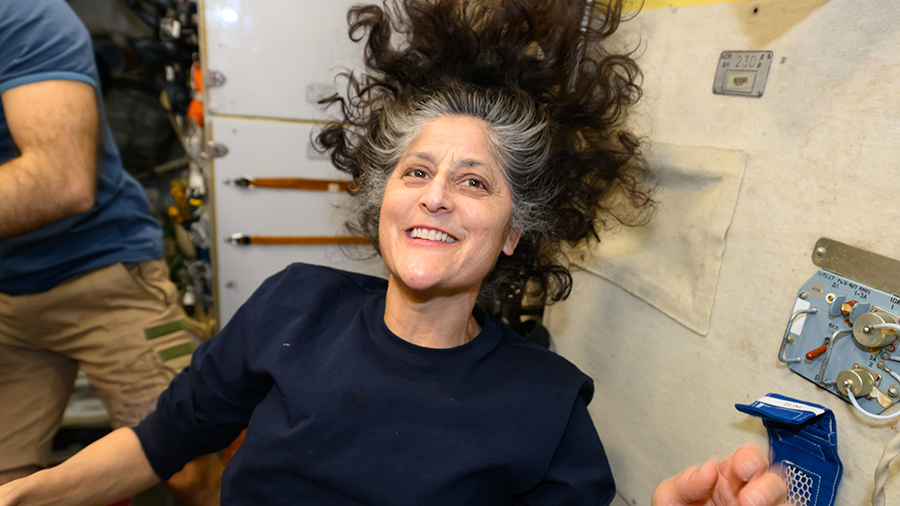
Robotic tentacles, antibiotic resistant microbes, and space agriculture topped the research schedule aboard the International Space Station at the end of the week. The Expedition 72 crew members are also preparing for a spacewalk and continuing maintenance on the orbital outpost.
NASA astronaut and station Commander Suni Williams had a busy day on Friday researching how robots could capture orbital debris and growing safe and nutritious food in space. Williams activated an Astrobee robotic free-flyer outfitted with tentacle-like arms containing gecko-like adhesive pads. Then, she and ground controllers monitored the Astrobee as it demonstrated docking maneuvers that could be used to remove orbital debris and capture satellites for servicing. She also trimmed red romaine lettuce leaves being grown in the Advanced Plant Habitat to test different moisture levels that may support growing crops in space.
NASA Flight Engineer Don Pettit worked in the Columbus laboratory module sequencing microbial DNA to identify the characteristics of antibiotic resistant organisms in microgravity. Results may reveal why some pathogens are more potent in space and address the risks to astronaut health.
NASA Flight Engineer Nick Hague started his day processing bacteria and yeast samples to learn how to produce food and medicine in space. Afterward, Hague, with assistance from NASA Flight Engineer Butch Wilmore, wrapped up a six-month inspection and cleaning of the COLBERT treadmill’s hardware and components inside the Tranquility module. Wilmore would spend the rest of Friday off-duty after a busy week of microbial research and cargo packing inside the SpaceX Dragon cargo spacecraft.
Cosmonauts Alexey Ovchinin and Ivan Vagner continued preparing for a Dec. 19 spacewalk to remove external science experiments and relocate European robotic arm hardware. The duo first checked the hatch for leaks inside the Poisk module where they will exit the station to begin a planned six-hour and 40-minute spacewalk. Afterward, the pair from Roscosmos collected and organized the spacewalking tools they will use for the first excursion of Expedition 72.
Roscosmos Flight Engineer Aleksandr Gorbunov began his day measuring his body mass using a version of Newton’s first law of motion, force equals mass times acceleration. Next, he started his shift on orbital plumbing duties before ending his day inspecting a gas-liquid heat exchanger in the Zvezda service module.
Learn more about station activities by following the space station blog, @space_station and @ISS_Research on X, as well as the ISS Facebook and ISS Instagram accounts.
Get the latest from NASA delivered every week. Subscribe here: www.nasa.gov/subscribe
